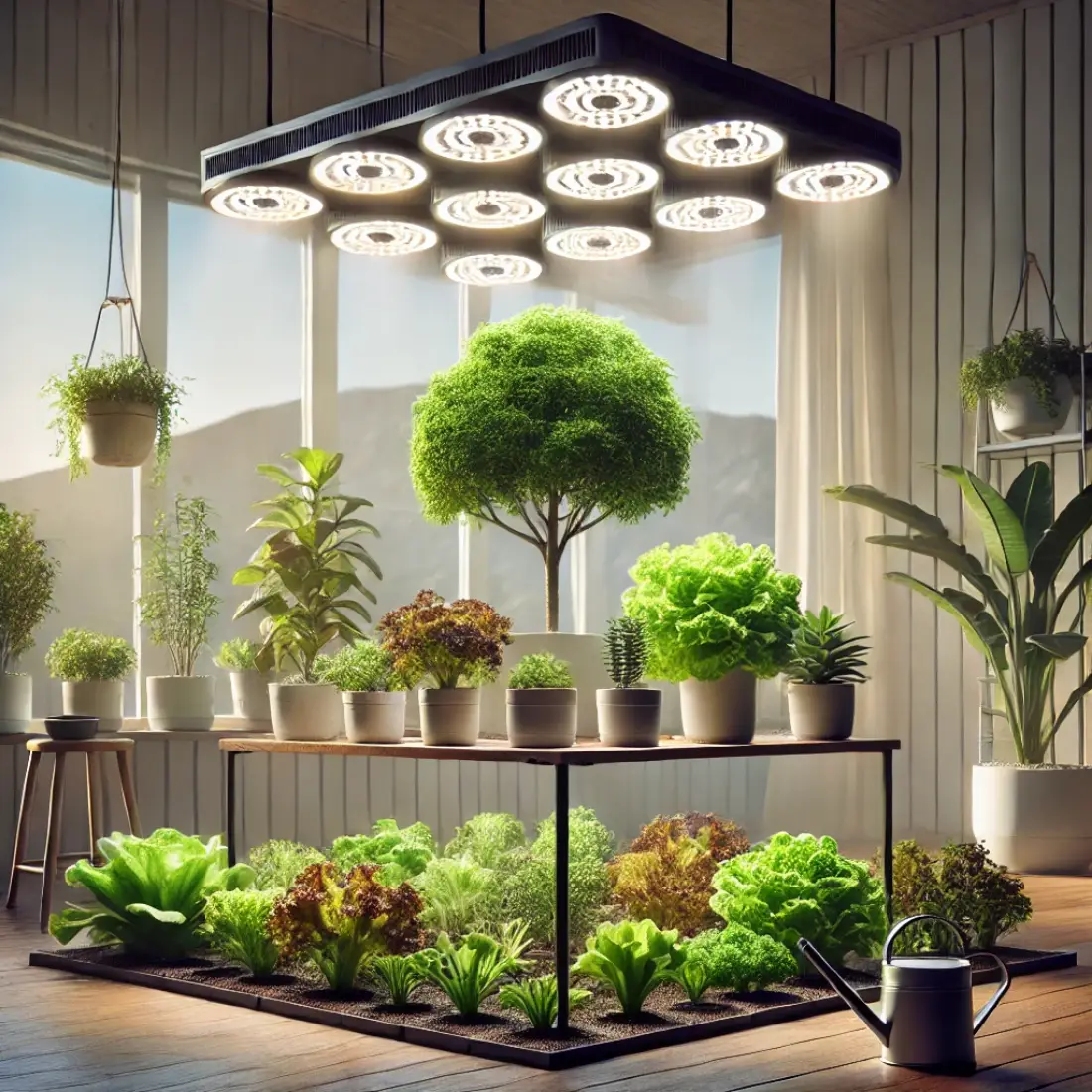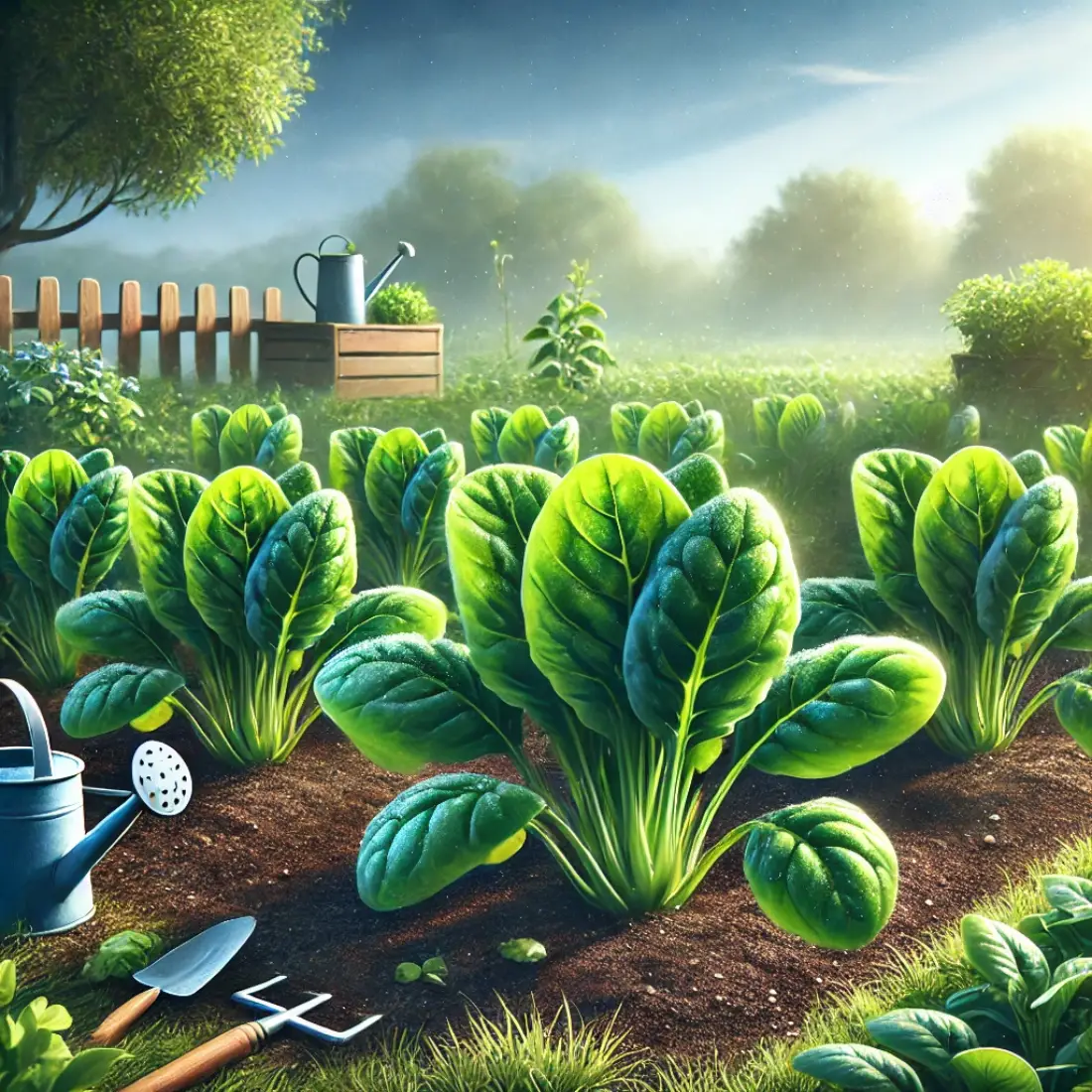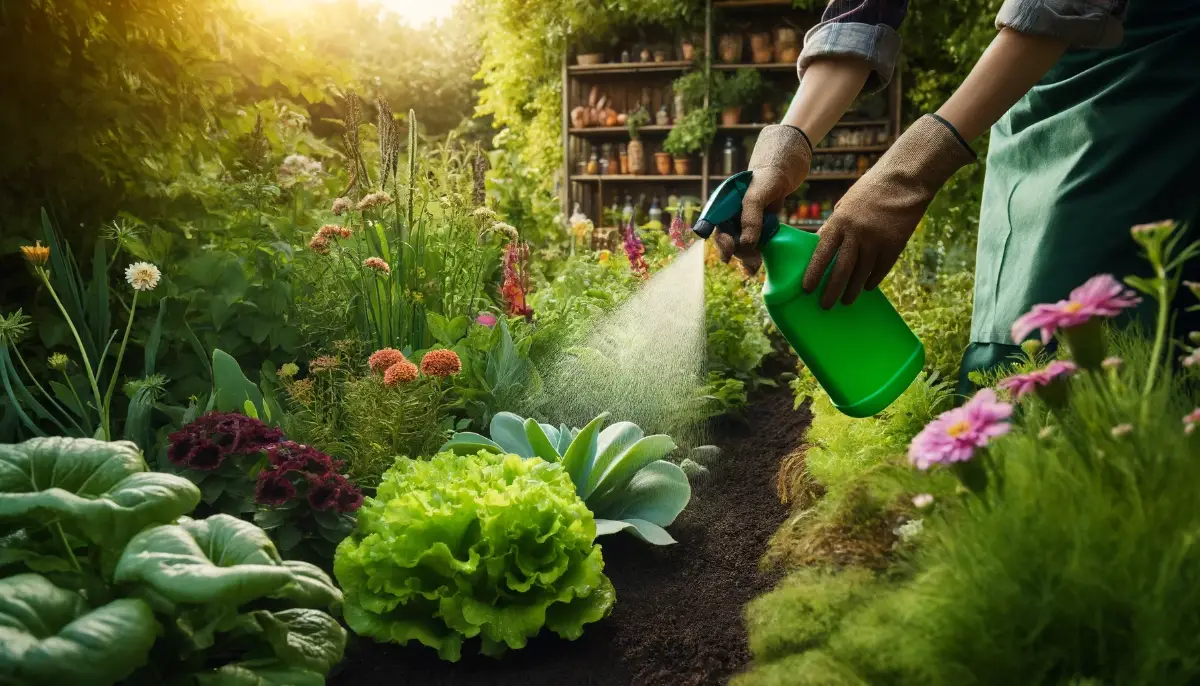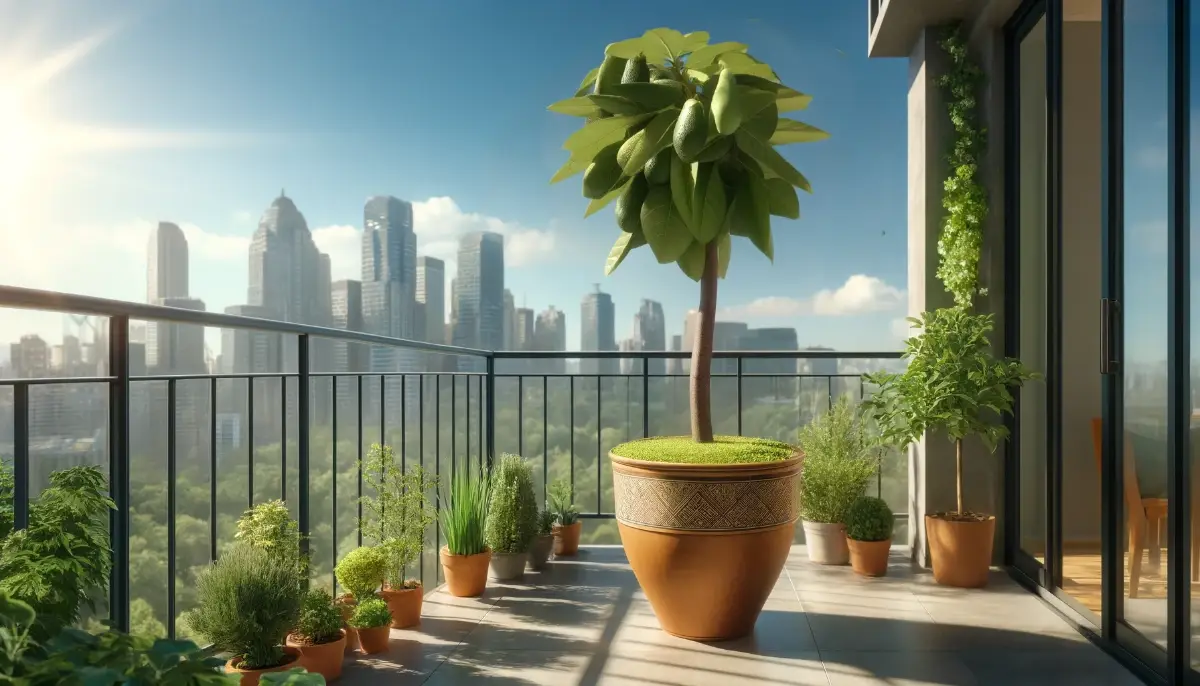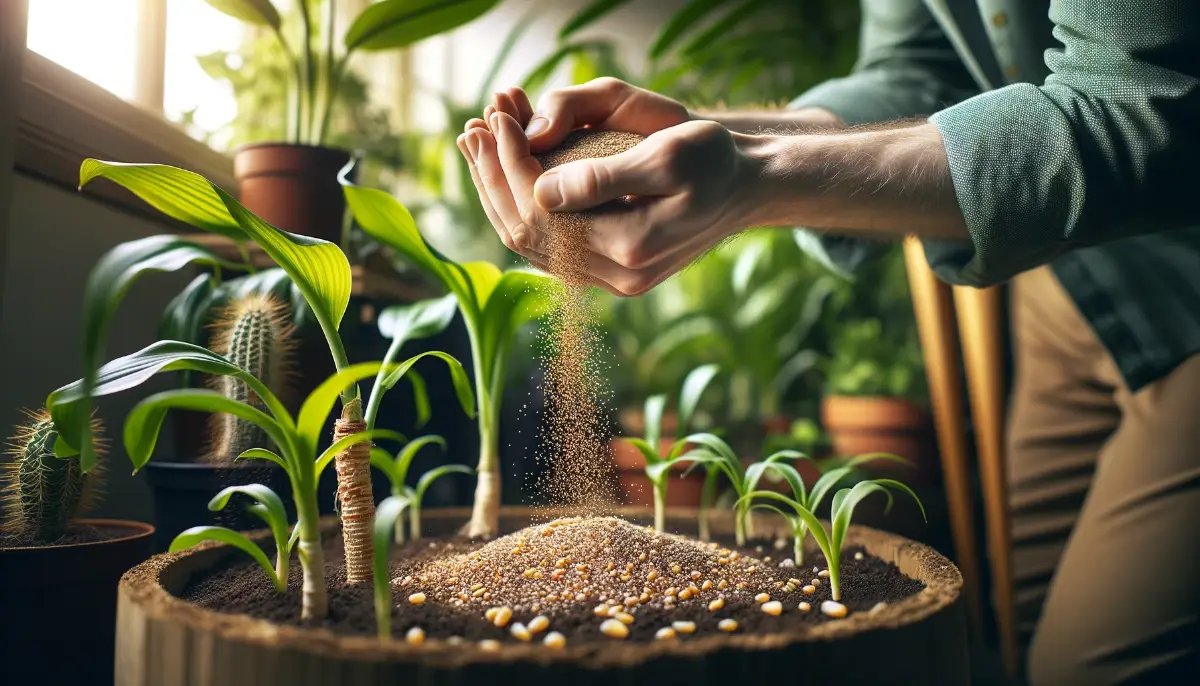Lettuce is a popular and versatile vegetable that can be easily grown both indoors and outdoors. As a key ingredient in salads, sandwiches, and wraps, lettuce offers versatility and health benefits, being rich in vitamins A, C, and K, as well as folate and fiber. Its ease of cultivation and quick growth cycle make it an excellent choice for home gardeners.
Choosing the Right Lettuce Varieties for Indoors
Growing lettuce indoors offers the advantage of a controlled environment, but selecting the right varieties is crucial for success. Certain types of lettuce are better suited for indoor cultivation due to their growth habits and light requirements.
Butterhead Lettuce
Butterhead varieties, such as Boston and Bibb, are ideal for indoor growing. They form loose heads and have a tender texture with a mild, buttery flavor. Butterhead lettuce thrives in containers and doesn’t require intense light, making it perfect for indoor conditions. Its compact size also makes it a great choice for limited space.
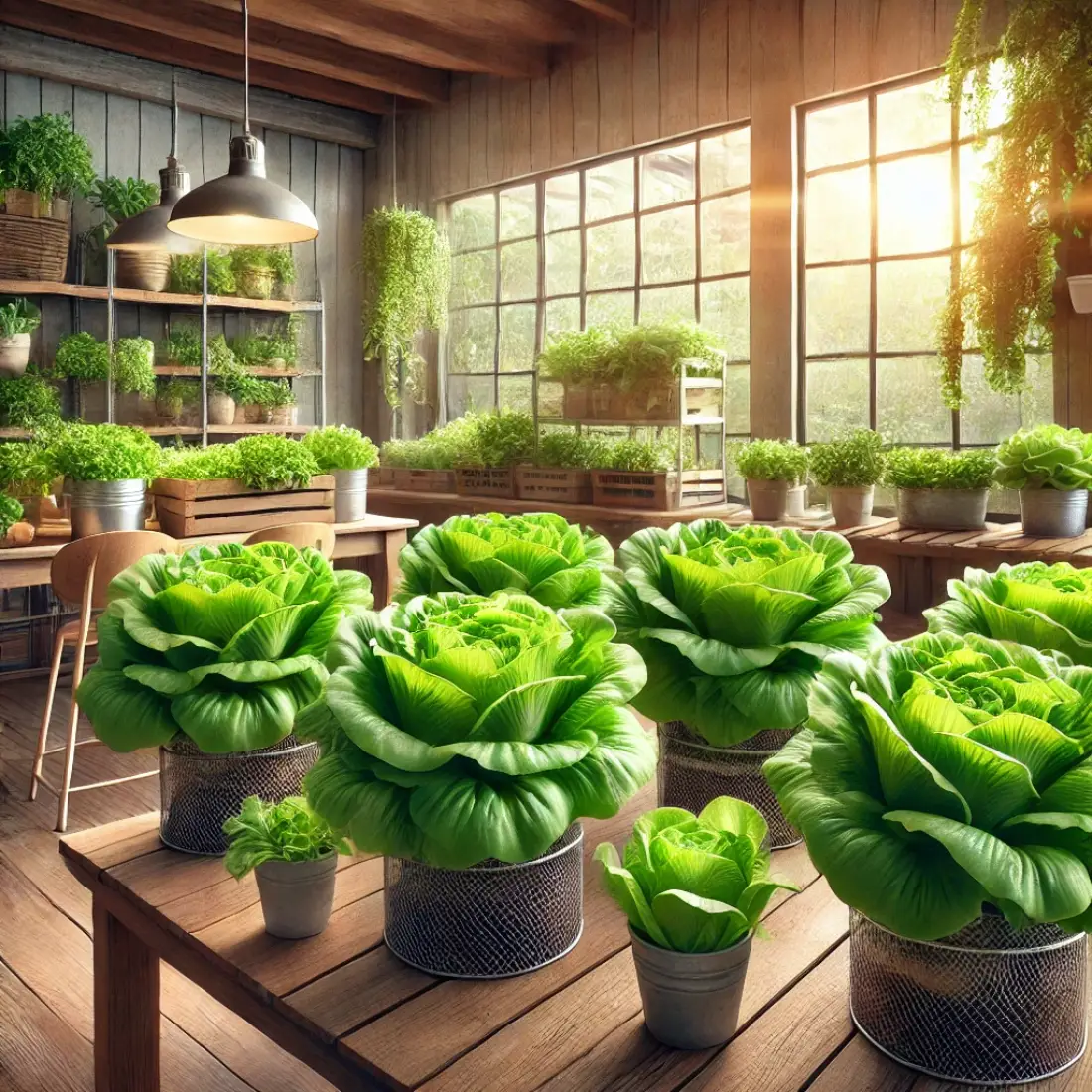
Loose-leaf Lettuce
Loose-leaf lettuce, including varieties like Oakleaf, Salad Bowl, and Red Sails, is another excellent option for indoor gardens. Unlike head-forming lettuces, loose-leaf types produce leaves that can be harvested individually, allowing for continuous harvest throughout the growing season. They grow quickly and tolerate lower light levels, which is beneficial for indoor environments. Their variety in color and texture adds visual appeal and nutritional diversity to your indoor garden.
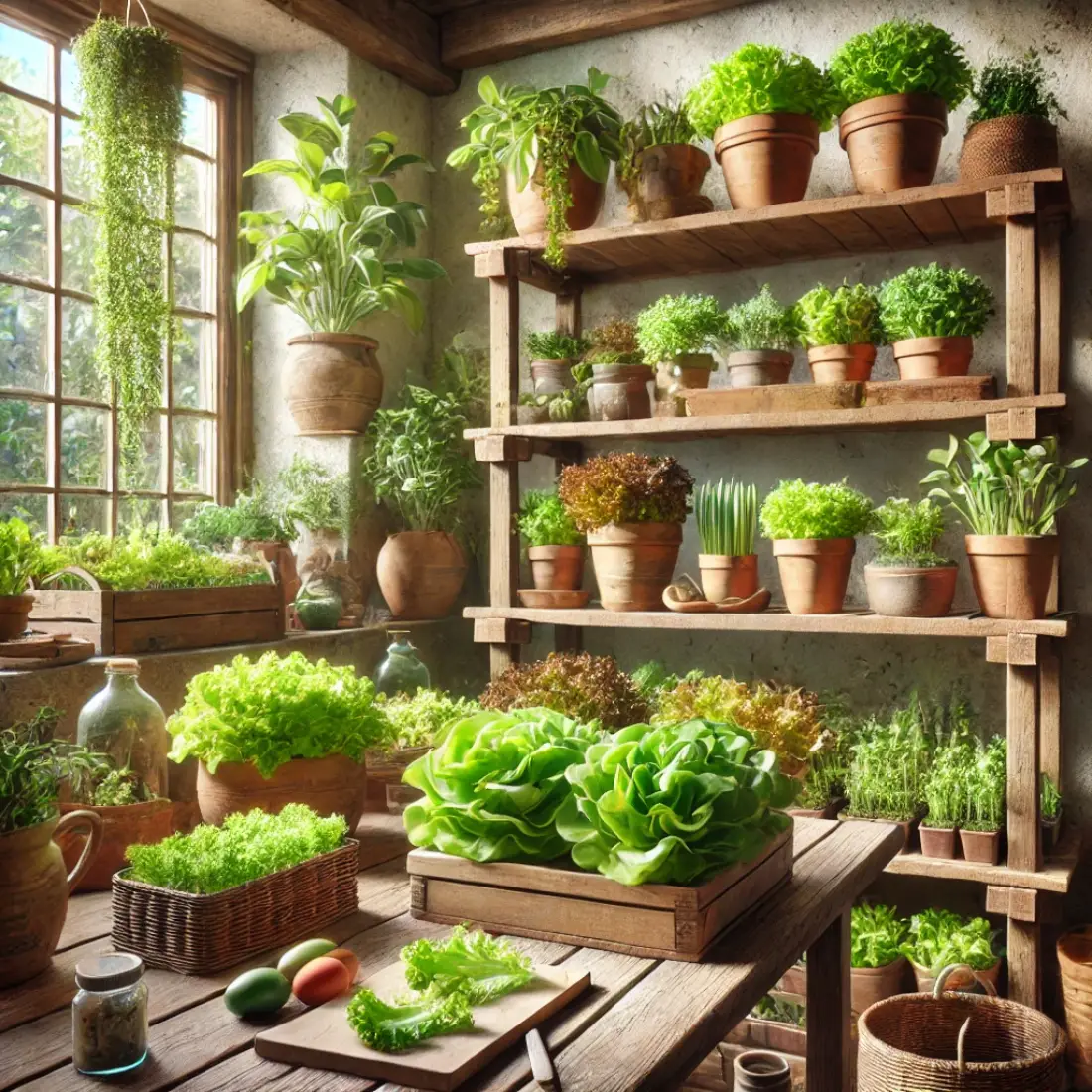
Romaine Lettuce
Romaine, or Cos lettuce, is a more upright-growing variety that can also be grown indoors. Varieties like Little Gem and Paris Island are particularly well-suited for container growing. Romaine lettuce has a slightly longer growing period compared to Butterhead and Loose-leaf, but it offers crisp, sturdy leaves that are perfect for salads and wraps. It requires moderate light levels and benefits from a well-drained soil mix.
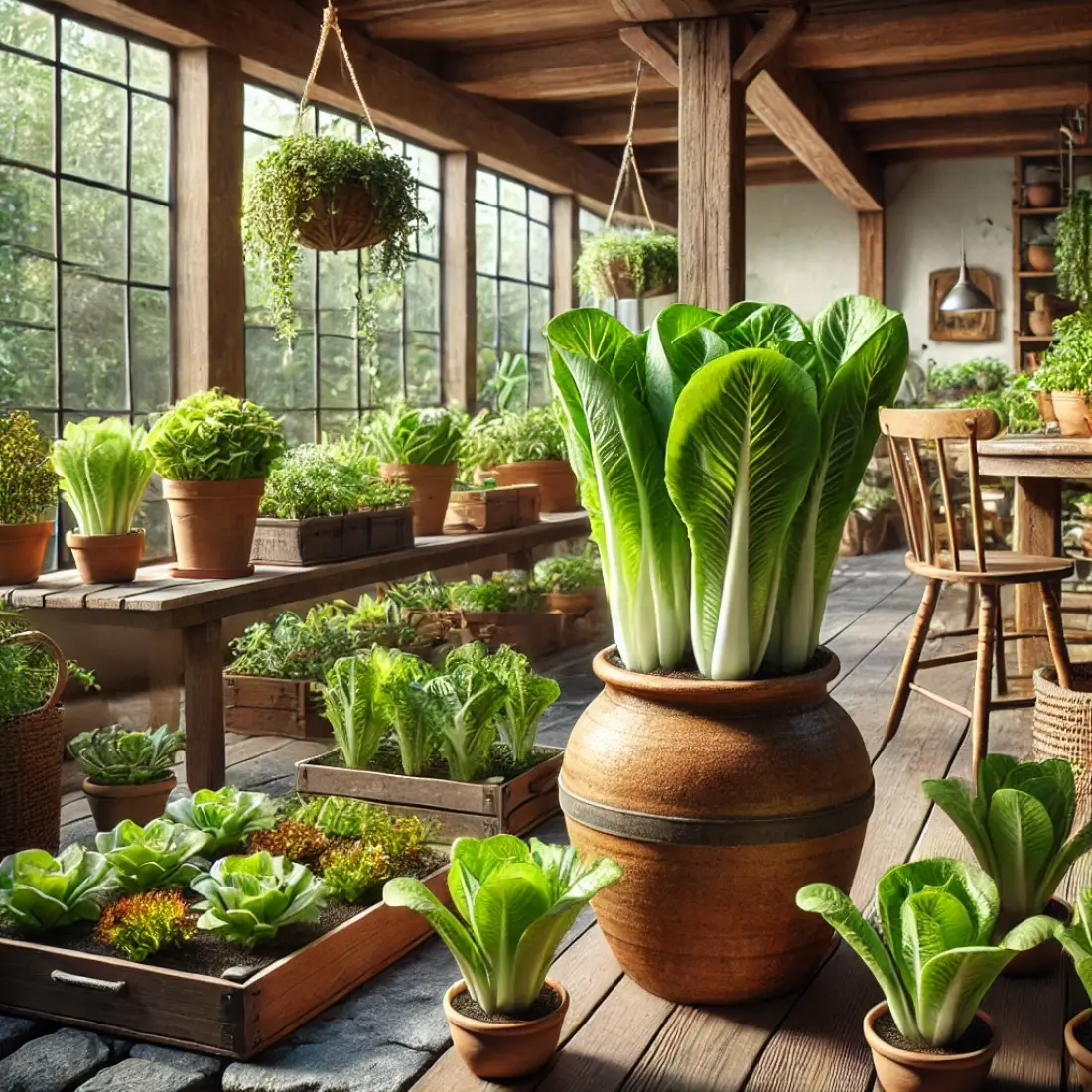
Specialty Varieties
For those looking to try something different, specialty varieties such as Deer Tongue and Cimmaron can be grown indoors. These varieties offer unique flavors and appearances, adding a gourmet touch to homegrown salads. They also adapt well to container growing and can thrive with standard indoor care.
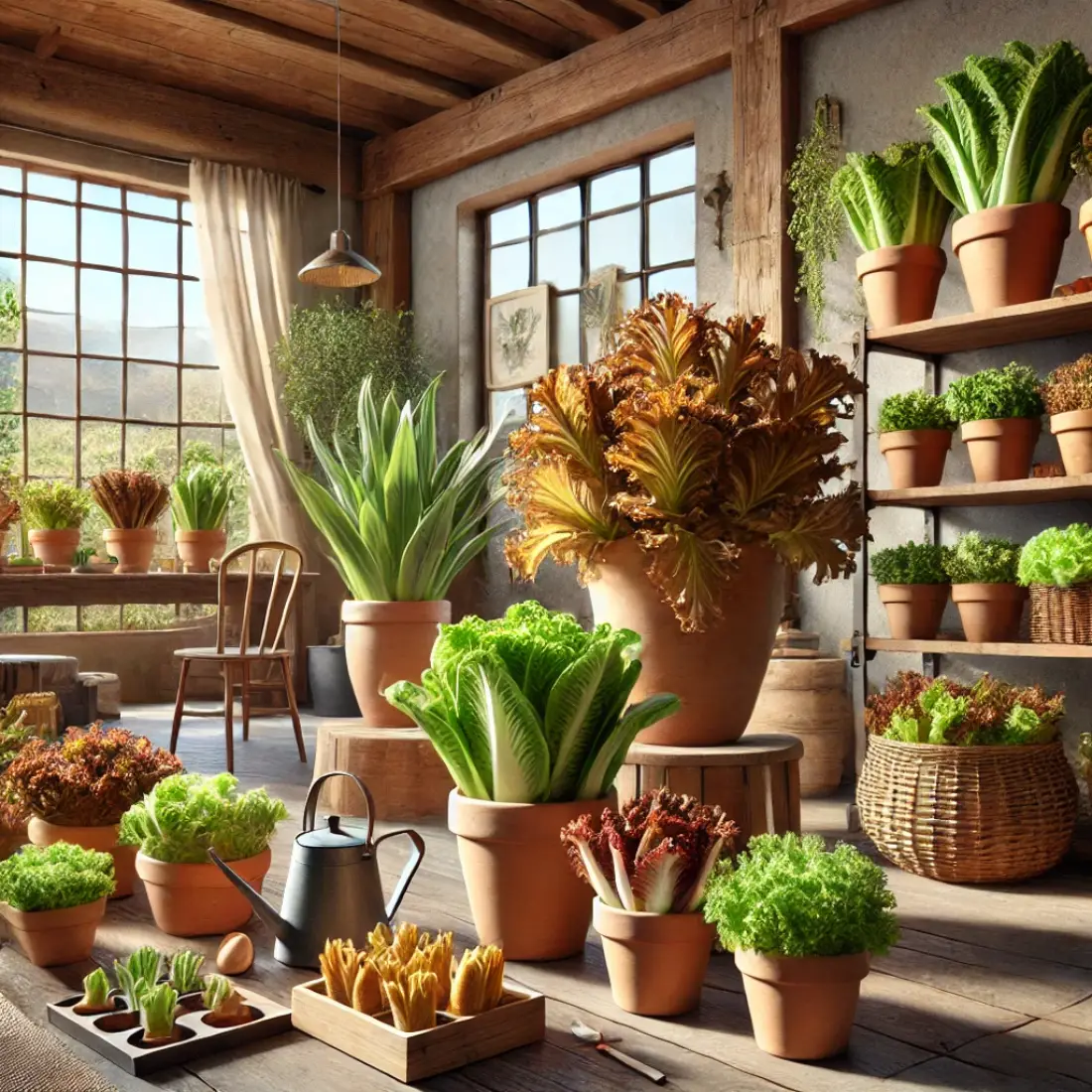
Preparing Your Indoor Garden
Setting up your indoor garden for growing lettuce is an essential step to ensure healthy plants and a bountiful harvest.
Choosing Containers and Pots
- Size and Material: Select containers that are at least 6-8 inches deep to accommodate the root systems of lettuce. Pots can be made of plastic, clay, or ceramic. Ensure they have drainage holes to prevent waterlogging, which can lead to root rot.
- Drainage: Proper drainage is crucial. Consider using trays to catch excess water and protect your indoor surfaces.
Importance of Soil Quality
- Potting Mix: Use a high-quality, lightweight potting mix that is rich in organic matter. Avoid garden soil, which can be too heavy and compact for container growing.
- Soil Additives: Consider adding perlite or vermiculite to improve soil aeration and drainage. Compost can also be mixed in to enhance nutrient content.
Optimal Lighting Conditions
- Natural Light: Place your containers near a south-facing window where they can receive at least 6-8 hours of sunlight daily. If natural light is insufficient, consider supplemental lighting.
- Grow Lights: LED or fluorescent grow lights can provide the necessary light spectrum for lettuce growth. Position the lights about 6-12 inches above the plants and keep them on for 12-16 hours a day to mimic natural sunlight.
- Light Positioning: Rotate the containers regularly to ensure even light distribution and prevent plants from leaning towards the light source.
Additional Considerations
- Humidity and Temperature: Maintain a stable indoor temperature between 60-70°F. Lettuce prefers a slightly cooler environment. Use a humidifier if indoor air is too dry.
- Air Circulation: Ensure good air circulation to prevent mold and fungal growth. A small fan can help improve air movement around your plants.
Planting Lettuce Seeds
Planting lettuce seeds indoors is a straightforward process that requires attention to detail to ensure successful germination and growth.
Steps for Planting Lettuce Seeds
- Seed Selection: Choose high-quality lettuce seeds suited for indoor growth. Ensure the seeds are fresh and stored in a cool, dry place before planting.
- Seed Preparation: Some gardeners prefer to soak lettuce seeds in water for 12-24 hours before planting to speed up germination, though this step is optional.
Planting Process
- Filling Containers: Fill your chosen containers or seed trays with a high-quality potting mix, leaving about an inch of space at the top. Gently firm the soil without compacting it too much.
- Sowing Seeds: Scatter the lettuce seeds evenly across the soil surface. For more precise planting, use the tip of a pencil or a small dibber to make shallow indentations and place seeds individually. Aim to plant seeds about 1/4 inch deep.
- Covering Seeds: Lightly cover the seeds with a thin layer of potting mix or vermiculite. Avoid burying them too deeply, as lettuce seeds need light to germinate.
Germination Process and Timeline
- Watering: Gently mist the soil with water using a spray bottle to keep it evenly moist but not waterlogged. Ensure the soil remains consistently damp during the germination period.
- Temperature and Light: Maintain a temperature of 60-70°F for optimal germination. Lettuce seeds typically germinate within 7-14 days. Ensure they receive adequate light by placing them near a bright window or under grow lights.
Proper Spacing and Depth for Seeds
- Spacing: Once seedlings emerge and develop their first true leaves, thin them out to provide adequate space for growth. Space the plants about 4-6 inches apart to allow for proper airflow and reduce competition for resources.
- Transplanting: If you started seeds in small seed trays, transplant the seedlings into larger containers or their final growing pots once they have a few sets of true leaves.
Watering and Organic Fertilizing Indoor Lettuce
Proper watering and organic fertilizing are crucial for growing healthy lettuce indoors. Here’s how to ensure your lettuce gets the right amount of water and nutrients.
Watering Indoor Lettuce
- Frequency: Lettuce prefers consistently moist soil but not waterlogged conditions. Water your lettuce plants lightly but frequently, typically every 1-2 days, depending on the indoor climate and container size.
- Method: Use a watering can with a fine spout or a spray bottle to water the soil gently. This prevents soil disturbance and ensures even moisture distribution. Avoid overhead watering, which can lead to mold and fungal issues.
- Soil Moisture: Keep the soil consistently damp but not soggy. Check the moisture level by inserting your finger about an inch into the soil; it should feel slightly moist. If it feels dry, it’s time to water.
- Drainage: Ensure your containers have proper drainage holes to prevent waterlogging. Excess water should flow out freely, avoiding root rot and other moisture-related problems.
Organic Fertilizing Indoor Lettuce
- Choosing Organic Fertilizers: Opt for organic fertilizers such as compost, worm castings, or commercially available organic liquid fertilizers. These options provide essential nutrients without harmful chemicals.
- Application Frequency: Fertilize your lettuce plants every 2-3 weeks. Over-fertilizing can lead to nutrient burn, so it’s essential to follow the recommended application rates on the fertilizer packaging.
- Application Method: For liquid fertilizers, dilute according to the instructions and apply directly to the soil. For solid fertilizers like compost or worm castings, sprinkle a thin layer on the soil surface and gently work it into the top layer without disturbing the roots.
- Balanced Nutrition: Lettuce requires a balanced mix of nitrogen, phosphorus, and potassium. Organic fertilizers typically provide a good balance, but you can supplement with specific nutrients if you notice deficiencies. For example, yellowing leaves may indicate a nitrogen deficiency, while poor root development can suggest a lack of phosphorus.
Monitoring Plant Health
- Leaf Color and Growth: Regularly check your lettuce plants for signs of nutrient deficiencies or over-watering. Healthy lettuce should have vibrant green leaves and steady growth.
- Adjustments: Be ready to adjust your watering and fertilizing routine based on plant health and environmental conditions. More frequent watering may be needed in dry indoor environments, while less may be required in more humid conditions.
Harvesting Indoor Lettuce
Harvesting your indoor lettuce at the right time ensures the best flavor and texture. Here’s how to do it effectively:
Signs That Lettuce is Ready to Harvest
- Visual Cues: Lettuce is typically ready to harvest when it reaches a suitable size for the variety you’re growing. For loose-leaf types, leaves should be 4-6 inches long. Butterhead and romaine varieties form heads that should be firm and well-formed but not overly compact.
- Timing: Most lettuce varieties are ready to harvest 30-70 days after planting, depending on the type. Check seed packets for specific timelines.
Harvesting Techniques
- Loose-Leaf Lettuce: Use scissors or garden shears to snip outer leaves, allowing the center to continue growing. This method, known as “cut-and-come-again,” enables multiple harvests from the same plant.
- Head Lettuce: For butterhead, romaine, or other head-forming varieties, wait until the head is fully developed. Use a sharp knife to cut the entire head off at the base, just above the soil level.
- Avoiding Damage: Handle lettuce gently to avoid bruising the leaves. Harvest in the morning when leaves are crisp and full of moisture.
Post-Harvest Care
- Washing: Rinse harvested lettuce leaves thoroughly under cool water to remove soil and any pests. Use a salad spinner to dry the leaves gently, or pat them dry with paper towels.
- Storage: Store harvested lettuce in a plastic bag or container in the refrigerator. Lettuce can stay fresh for up to a week when stored properly. To extend freshness, keep the leaves slightly damp by placing a damp paper towel in the storage container.
Continuous Harvesting
- Successive Planting: For a continuous supply of fresh lettuce, practice successive planting. Sow new seeds every two weeks to ensure a steady harvest.
- Monitoring: Regularly check your plants and harvest leaves as they reach the desired size. This encourages new growth and prolongs the productive life of your plants.
Troubleshooting Common Indoor Growing Problems
Growing lettuce indoors can present some challenges. Here are solutions to common issues to keep your plants healthy and thriving:
Leggy Growth
- Cause: Insufficient light.
- Solution: Ensure your lettuce gets at least 12-16 hours of light daily. Use LED or fluorescent grow lights if natural light is inadequate. Position the lights 6-12 inches above the plants and adjust as they grow.
Yellowing Leaves
- Cause: Over-watering, poor drainage, or nutrient deficiencies.
- Solution: Check soil moisture and ensure proper drainage. Water only when the top inch of soil feels dry. Use a balanced organic fertilizer to provide essential nutrients. Ensure the soil pH is between 6.0 and 7.0 for optimal nutrient uptake.
Slow Growth
- Cause: Low temperatures or inadequate nutrients.
- Solution: Maintain indoor temperatures between 60-70°F. Ensure your plants receive regular feeding with organic fertilizer. Check for pests or diseases that may be stunting growth.
Wilting Leaves
- Cause: Under-watering or root damage.
- Solution: Water consistently to keep the soil evenly moist. Avoid disturbing the roots during maintenance. Ensure your containers have adequate drainage to prevent root rot.
Pest Infestations
- Common Pests: Aphids, spider mites, and whiteflies.
- Solution: Inspect plants regularly. Use neem oil or insecticidal soap as a natural remedy. Introduce beneficial insects like ladybugs to control pests. Maintain good air circulation to discourage pests.
Fungal Issues
- Cause: Over-watering and poor air circulation.
- Solution: Water plants at the base to avoid wetting the foliage. Improve air circulation with a small fan. Remove affected leaves promptly and dispose of them properly.
Preventive Measures
- Hygiene: Keep your indoor garden clean. Remove dead leaves and debris to reduce the risk of pests and diseases.
- Monitoring: Regularly inspect your plants for signs of trouble. Early detection and intervention can prevent minor issues from becoming major problems.
FAQs About Growing Lettuce Indoors
How much light does indoor lettuce need?
Indoor lettuce needs at least 12-16 hours of light daily. Natural light from a south-facing window is ideal, but LED or fluorescent grow lights can also be used to provide sufficient light.
How often should I water indoor lettuce?
Water indoor lettuce lightly but frequently, usually every 1-2 days. The soil should be kept consistently moist but not waterlogged. Check the moisture level by inserting your finger about an inch into the soil.
Can I grow lettuce indoors without soil?
Yes, lettuce can be grown hydroponically, which involves using a nutrient-rich water solution instead of soil. Hydroponic systems can be efficient and space-saving, making them ideal for indoor gardening.
What temperature is best for growing indoor lettuce?
Lettuce grows best at temperatures between 60-70°F. Maintaining this temperature range helps prevent bolting and ensures healthy growth.
How do I prevent pests on indoor lettuce?
Regularly inspect plants for common pests like aphids, spider mites, and whiteflies. Use natural pest control methods such as neem oil or insecticidal soap. Good air circulation can also help deter pests.
What type of container is best for growing lettuce indoors?
Choose containers that are at least 6-8 inches deep with good drainage holes. Plastic, clay, or ceramic pots are all suitable options. Ensure the containers provide enough space for the roots to grow.
How can I fertilize indoor lettuce organically?
Use organic fertilizers such as compost, worm castings, or commercially available organic liquid fertilizers. Apply every 2-3 weeks following the recommended rates on the fertilizer packaging.
Why are my indoor lettuce leaves turning yellow?
Yellowing leaves can result from over-watering, poor drainage, or nutrient deficiencies. Ensure proper watering practices, good drainage, and use a balanced organic fertilizer to provide essential nutrients.
How do I harvest lettuce grown indoors?
For loose-leaf varieties, snip outer leaves with scissors, allowing the center to continue growing. For head lettuce, use a sharp knife to cut the entire head off at the base when fully developed. Harvest in the morning for the best quality.
Can I grow lettuce indoors year-round?
Yes, you can grow lettuce indoors year-round by maintaining appropriate light, temperature, and humidity conditions. Successive planting every two weeks can ensure a continuous supply of fresh lettuce.

